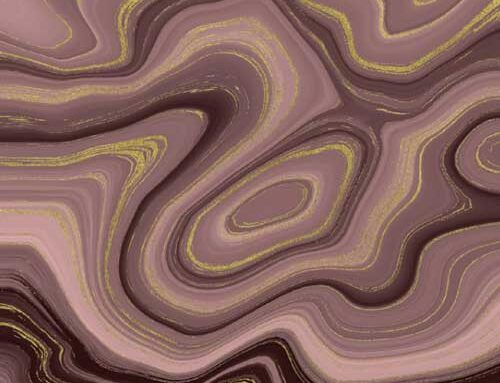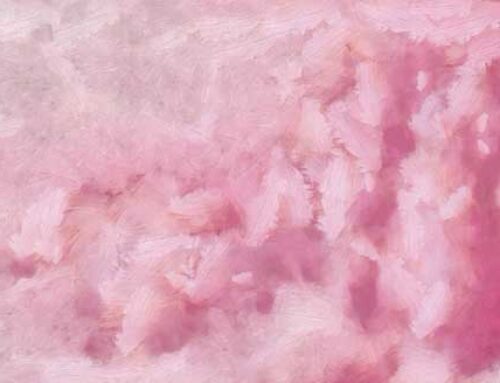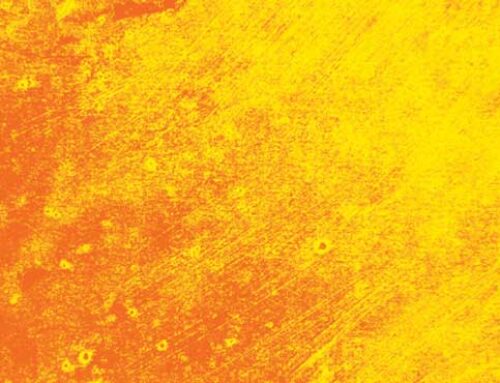by Assad Meymandi, MD, PhD, DLFAPA
Dr. Meymandi is in private practice as a psychiatrist and neurologist and serves as an adjunct professor of psychiatry at the University of North Carolina at Chapel Hill. He is a noted physician, editor, and philanthropist who frequently speaks and writes on diverse topics that relate to his interests in medicine, the arts, religion, and philanthropy. He lives in Raleigh with his wife Emily.
Innov Clin Neurosci. 2011;8(11):36–40
In preparing for this essay, I was drawn to the psychoanalytic literature of the late 19th and early 20th century. The further I dug, however, the more it became obvious that psychoanalysis did NOT start with Freud. Many of Freud’s teachers and predecessors had expounded on the theory of the unconscious. Plato, Shakespeare, Kant, Schopenhauer, and Nietzsche have all dealt with and expounded on the possibility of the unconscious, the soul, and metaphysics. In fact, I was taken all the way back to Aristotle, a student of Plato at Plato’s Academy and later a rival of Plato when Aristotle became angry and established his own school, the Lyceum. Aristotle’s writings are very organized and detailed, making the reader feel as if he or she is biting into stone. Aristotle had a lot to say about the psyche (soul), God, ether, and metaphysical phenomena.
Psychoanalysis is based on the concept that individuals are unaware of the many factors that cause their behavior and emotions. These unconscious factors have the potential to produce unhappiness, which in turn is expressed through a score of distinguishable symptoms, including disturbing personality traits, difficulty in relating to others, or disturbances in self-esteem or general disposition. Psychoanalysis thrived in the first 60 to 70 years of the 20th century, but experts fear the threatened demise of the field. What is the answer? The answer lies with uniting psychoanalysis with biological sciences.
In a recent discussion with an academic colleague, who identified the 20th century’s greatest achievement as the discovery of the atomic bomb, I suggested rather forcefully that the most significant contribution of the 20th century was the advancement of Father Gregor Mendel’s genetics through the discovery, by James Watson and Francis Crick in 1953, of ribonucleic acid (RNA) and deoxyribonucleic acid (DNA) . Watson and Crick were awarded the Nobel Prize for Medicine or Physiology in 1962. In 2003, we celebrated the 50th anniversary of the discovery of DNA at the University of North Carolina and Research Triangle Park by having Dr. James Watson among us. In my opinion, the understanding of DNA, and subsequent expansion of the knowledge and advancement of human genome project, which was completed in 2003 by Dr. Craig Venter from the Institute for Genomic Research, is the greatest achievement of the 20th century.
Now, in the 21st century, with wars being fought all over the globe and with humans killing humans for a few pieces of mud prized as land, the need for understanding human behavior makes psychoanalytic research more urgent. I believe we have the opportunity to develop further understanding of ourselves through an exciting new science, the science of mind. Studying the science of the mind can further the development of the transdisciplinary approach to understanding what it is to be human. If the 20th century was known for the discovery of DNA, genomics, and epigenetics, then the 21st century will be known for the discovery and understanding of the science of mind. And the promise of establishing such a discipline rests with espousing psychoanalysis with biological sciences, neuroscience, and neurobiology.
Of course, the concept of scientific understanding of the mind is not new. Sigmund Freud, in Beyond the Pleasure Principle, wrote there is an increase in plasma adrenocorticotropic hormone (ACTH) and glucocorticoid in response to stress. Thus, differences in an infant’s interactions with his or her mother—differences that fall in the range of naturally occurring individual differences in maternal care—are crucial factors for an individual’s future response to stress. In the same book, Freud further elaborated, “The deficiencies in our description would probably vanish if we were already in a position to replace the psychological terms with physiological or chemical ones….We may expect [physiology and chemistry] to give the most surprising information and we cannot guess what answers it will return in a few dozen years of questions we have put to it. They may be of a kind that will blow away the whole of our artificial structure of hypothesis…” In his classic paper, “On narcissism,” Freud wrote, “We must recollect that all of our provisional ideas in psychology will presumably one day be based on an organic substructure.”
A little over 100 years ago, Freud was invited, along with his colleague Carl Jung, to Clack University, in Worcester, Massachusetts, to give a series of lectures entitled, “Psychology and Pedagogy.” He met many American academicians, including Adolph Myers of the Johns Hopkins University and Harvard neurologist J. J. Putnam. We know that Putnam became the first president of the American Psychoanalytic Association, suggesting strong organic and scientific propensity of early psychoanalytic endeavors. After the lectures, Freud and Jung spent four days at the Putnam camp in Adirondacks with Putnam, which guaranteed the wide spread of psychoanalysis in America. The roots of American psychoanalysis are indeed deeply rooted in biological soil.
In 1966, when I was the director of Cumberland County Mental Health Center, I applied for a grant for the Head Start program. I used a study by Karolinska Institute, which was published in the Acta Physiologica Scandinavica and The Lancet demonstrating that fetal central nervous systems (CNS) exposed to excess secretion of maternal catecholamine, especially the powerful metabolites, metanephrines, vanillyllmandelic acid, and 3-methoxy 5-hydroxyphenylglycol (MHPG), produce babies that are more irritable, scrawny, cranky, susceptible to attention deficit hyperactivity disorder (ADHD), and prone to anxiety, phobia, and social maladjustment. President Kennedy, having had mental illness and mental retardation in his family, launched an extensive program of community-centered care for patients. President Johnson, who followed Kennedy, established the “Head Start” program, which encouraged the community to reach out to at-risk children at a very young age. Being armed with the knowledge out of Sweden, my team and I wrote a grant request and sent it to the President. In the grant, we stated that age one or two years is too late. We proposed a program we dubbed “Intrauterine Head Start Project.” The then President Johnson liked the idea. We were given a large grant that ensured Cumberland County of being the first center in North Carolina to have a comprehensive community mental health program. The result was a book, The First Two Hundred Days, published in 1967 with subsequent multiple prints.
There are many areas and precedence where psychology and biology have cooperated and converged. The neuroscientific interest in dreams, which started in 1953 with the discovery of rapid eye movement (REM) sleep by Aserinsky and Klietman, is a good example of where psychophysiologic findings were woven into the tapestry of biology. There are many exciting discoveries in the area of psychoendocrinology of dream and memory coming out through many sources and laboratories both in the United States and abroad. In fact, an article by Mauro Mancia, sage of the Italian academia, neurobiologist, and psychoanalyst, was recently published in the American Journal of Psychiatry entitled, “The role of the interrelation between serotonin (5-HT), muramyl dipeptide, and interleukin1 (IL-1) in sleep regulation, memory, and brain.” Dr. Mancia is also the editor of one of my most recent reads, Psychoanalysis and Neuroscience. Dr. Mancia is Professor Emeritus of Neurophysiology, University of Milan, Italy, and Training Analyst of the Italian Psychoanalytical Society and has written extensively on the subjects of narcissism, dreams, sleep, memory, and the unconscious. The book is in-depth exploration of the possibilities and hope to bring psychoanalysis and biology to dine at the same table.
Neuroscientific knowledge of the essence of what memory is has been enhanced by the mapping of the brain’s limbic system responsible for housing emotions. These anatomical related structures demonstrate the common neuronic pathway of memory and emotions. It was Paul D. McLean in the 1940s, while mapping specific components of the limbic system, who invoked the romantic notion that the limbic system is “the anatomy of emotions.” The limbic system consists of thalamus hypothalamus, amygdala, hippocampus, mammallary bodies, cingulate gyrus, fornix, association cortex, and pituitary. After delineating various nuclei of hypothalamus, McLean introduced, through a stereotype technique, a microelectrode into the paraventricular nucleus of the hypothalamus and ran 70 millivolts of electricity through the area. The subject would arise with anger, dilated pupils, engorged neck veins, and sympathetic system overtake. Next, McLean would stimulate the ventral nucleus of hypothalamus, just a few millimeters caudally from the first site. By stimulating this region, the subject would then relax, take a deep breath, smile, and demonstrate the physiological manifestation of the parasympathetic discharge. The future possibilities of psychoanalysis working together with neurosciecnes and biology is dazzling.
Now that we are in the 21st century, we need a modern Freud to orchestrate the disparate parts of psychoanalysis, biological sciences, genomics, neurosciences, and neurobiology to produce a better understanding of the rich symphony of mind and ultimately life.
We do have a few contemporary Freuds—one is Eric Kendal, whose most recent book, The Science of the Mind, I reviewed two years ago in the pages of this journal. Dr. Kendal, a Nobel Laureate psychiatrist and professor at Columbia University, insists that to save psychoanalysis and pump vigorous life into this elegant field, we need to bring about the fusion of the two disciplines of psychoanalysis and biology. Otherwise, there is a widespread concern about viability of psychoanalysis as a scientific discipline. For example, Jonathan Lear and others have argued that psychoanalysis and psychoanalytic literature from Freud to Hartmann to Erickson to Winnicott, will be read as a modern philosophical or poetic text alongside Plato, Aristotle, Shakespeare, Kant, Schopenhauer, Nietzsche, and Proust (the literature I went through for preparation of this essay). On the other hand, if the field aspires, as I believe most psychoanalysts do aspire, to be an evolving, active contributor to an emerging science of the mind, then psychoanalysis will survive. There is no doubt that psychoanalysts did and can make many useful and original contributions to our understanding of the mind simply by listening to their patients. We must, at last, acknowledge that, at this point in the modern study of mind, clinical observation of individual patients must occur. As Eissler (1908–1999) and Dahl (1924–2007) once said, “the psychoanalytic situation that is so susceptible to observer bias is not a sufficient basis for a science of mind.” Psychoanalytic research is depleted from opportunities to add more knowledge.
Marshall Edelson in his book Hypothesis and Evidence offers the persuasive argument that the holy marriage between psychoanalysis and biology must take place— “We must bring psychoanalysis and biology together.” All of these pioneer psychoanalysts follow the notions of Freud and recommend, or dream (pun intended), about congruence between psychoanalysis and biology. Many argue passionately that psychoanalysis is falling behind.
Biology carries the promise of reinvigorating the psychoanalytic exploration of mind. I should say at the outset that although we have the outlines of what could evolve into a meaningful biological foundation for psychoanalysis, we are very much at the beginning. We do not yet have an intellectually satisfactory biological understanding of any complex mental processes.
In the next century, biology is likely to make deep contributions to the understanding of mental processes by delineating the biological basis for the various unconscious mental processes, psychic determinism, the unconscious mental processes in psychopathology, and the therapeutic effect of psychoanalysis. Biology will not, however, immediately enlighten these deep mysteries at their core.
We have seen one point of convergence between biology and psychoanalysis, which is the relevance of procedural memory for a child’s early moral development, for aspects of transference, and for moments of meaning in psychoanalytic therapy. We have considered a second point of convergence in examining the relationship between the associative characteristic of classical conditioning and psychological determinacy. Here, I want to illustrate a third point of convergence: Pavlovian fear conditioning, a form of procedural memory mediated by the amygdala, signal anxiety, and posttraumatic stress syndromes in humans.
Psychoanalysis and cognitive neuroscience would accomplish two goals for psychoanalysis: one conceptual and the other experimental. We must recollect that all of our provisional ideas in psychology will presumably one day be based on an organic substructure.
The American psychologist, Harry Harlow (1905–1981) was best known for his maternal separation and social isolation experiments on rhesus monkeys, which demonstrated the importance of caregiving and companionship in social and cognitive development. He conducted most of his research at the University of Wisconsin–Madison, where humanistic psychologist, Abraham Maslow, worked for a time with him.
Hans Selye had pointed out as early as 1936 that humans and experimental animals respond to stressful experiences by activating their hypothalamic-pituitary-adrenal (HPA) axis. The end product of the HPA system is the release of glucocorticoid hormones by the adrenal gland.
We know the effect of phyenylethylamine in erotic arousal. Psychoanalyst Sir Martin Roth, the first President of the Royal College of Psychiatrists, Emeritus Professor of Psychiatry in Cambridge, and the most eminent British psychiatrist of his generation, described pseudoneurotic schizophrenia in the 1940s, and in mid-50s published a series of papers about research conducted in his biochemistry laboratories. These papers suggested that famous movie stars with supernumerary marriages (Marilyn Monroe, Elizabeth Taylor, and Za Za Gabor, to name a few) carry a high level of PEA in their circulation. He suggested another brand new diagnosis, hysteroid dysphoria, to clinically describe these people’s hyper-erotocism. I could literally write a book about the cordial and rich history of psychoanalysis and biology both in Europe and America.
The prefrontal association cortex has two major functions: it integrates sensory information and it links it to planned movement. Because the prefrontal cortex mediates these two functions, it is thought to be one of the anatomical substrates of goal-directed action in long-term planning and judgment. Patients with damaged prefrontal association areas have difficulty in achieving realistic goals. As a result, they often achieve little in life, and their behavior suggests that their ability to plan and organize everyday activities is diminished.
For many years both the Association for Psychoanalytic Medicine at Columbia and the New York Psychoanalytic Institute, to use but two examples, have instituted (with the help of my colleague, James H. Schwartz) neuropsychoanalytic centers that address interests common to psychoanalysis and neuroscience, including consciousness, unconscious processing, autobiographical memory, dreaming, affect, motivation, infantile mental development, psychopharmacology, and the etiology and treatment of mental illness. The prospectus of the New York Psychoanalytic Institute now reads as follows:
“The explosion of new insights into numerous problems of vital interest to psychoanalysis needs to be integrated in meaningful ways with the older concepts and methods as do the burgeoning research technologies and pharmacological treatments. Similarly, neuroscientists exploring the complex problems of human subjectivity for the first time have much to learn from a century of analytic inquiry.”
The challenge for psychoanalysts is to become active participants in the difficult joint attempt of biology and psychology, including psychoanalysis, to understand the mind. If this transformation in the intellectual climate of psychoanalysis is to occur, as I believe it must, the psychoanalytic institutes themselves must change from being vocational schools—guilds, as it were—to being centers of research and scholarship.
To examine this problem, the Carnegie Foundation commissioned Abraham Flexner to study medical education in the United States. The Flexner Report, which was completed in 1910, emphasized that medicine is a science-based profession and requires a structured education in both basic science and its application to clinical medicine. To promote a quality education, the Flexner Report recommended limiting the medical schools in this country to those that were integral to a university. As a consequence of this report, many inadequate schools were closed, and credentialed standards for the training and practice of medicine were established.
To return to its former vigor and contribute importantly to our future understanding of mind, psychoanalysis needs to examine and restructure the intellectual context in which its scholarly work is done and to develop a more critical way of training the psychoanalysts of the future. Thus, what psychoanalysis may need, if it is to survive as an intellectual force into the twenty-first century, is something akin to a Flexner Report for the psychoanalytic institutes.





